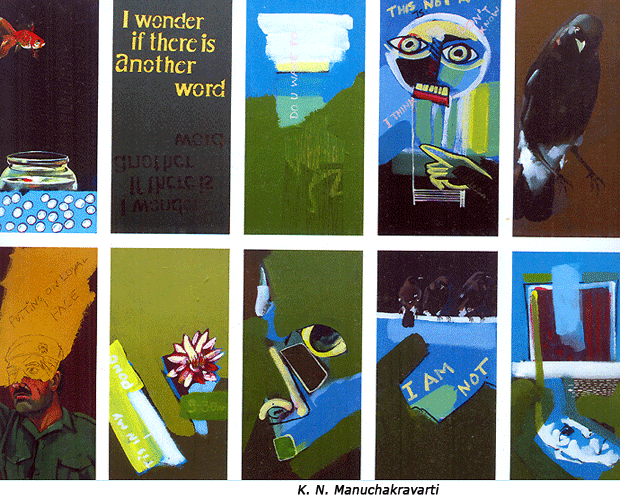- Prelude
- Guest Editor’s Column
- Hard Talk
- Digital Art
- The Write Stuff
- The Art of the Shakers : Shaker Furniture
- New Media
- In the News
- GenNext
- Report
- Artist Index and Statistics
- Market Insight
- Auction Reports
- The month that was
- Mumbai Artsighting
- Musings from Chennai
- Delhi Dias
- Deccan Odyssey
- Art Bengaluru
- In between – from Vadodara
- North-East Opsis
- A Tryst with Art in Madhya Pradesh
- Strands of Social Semiotics
- Transcending Popular
- Art of the Land & Land in Art (part I)
- Through The Patina
- Earth
- Go See India
- Dali's Elephant
- Malleable Memory
- Creative Impulse
- Different hues of Aakriti
- Bonhams : Fine Writing Instruments New York
ART news & views
Musings from Chennai
Volume: 2 Issue No: 7 Month: 8 Year: 2010

With the World Tamil Conference and its emphasis on Tamil and Tamil Nadu coming to an end, perhaps it is time to recollect that art can grow only through a natural process of osmosis where there is an openness to absorb ideas from different places and people. So this month's Musings from Chennai shall look at two exhibitions held in the last month by artists from the neighbouring states of Karnataka and Andhra Pradesh.
Hyderabad Hues, a month long show, presented by Vismayah!, Hyderabad and Ashvita Arts, Chennai, showcased a selection of young and senior artists from Hyderabad. While the show introduced Chennai's audience to the works of artists, it would have helped more if the selection of works had been contextualised against the backdrop of the art scenario in Andhra Pradesh. Rajeshwar Rao's mixed media on acrylic depicted a laughing woman and a dog. Not only did the work contain a playful quality but through the use of a warm colour scheme and the spontaneous treatment of the subject, the work evoked the tenderness characteristic of such moments. In contrast were the works of Sreekanth Kurva and D.Jayaprakash which consisted of stylised representations of tigers and bulls. Bharat Yadav's paintings also depicted the bull but in a rough, powerful way reminiscent of Picasso's iconic bulls. Gowri Vemula's dry point on acrylic not only carried a remarkable control over the line but also used it to tease out fantastic forms and creatures. Several artists in the show explored the human form. Laxma Goud's works consisted of a squatting rural couple. However the enigmatic gesture and direct gaze of the woman added a certain tension to the work. Ramesh Gorjala's works consisted of mythological figures depicted in a style derived from traditions like Kalamkari. Sachin Jaltare, Fawad Tamkanat, Laxman Aelay, T. Vaikuntam were the other artists who were inspired by the human form. Srikanth Kolhe's canvases, provided an interesting counter note in the show as his 'Life Space' consisted of empty rooms with dark brooding lightings. Shivaramachary's sculpture of organic forms and creatures were unique in the show, though a greater impact would have been created had there been more works.
K.N. Manuchakravarti's paintings displayed at DakshinaChitra gallery consisted of fragmented canvases of standard sizes and shapes that could be arranged in variable displays. Crows, portraits of boys and flowers were common motifs painted in a combination of styles while some works had words painted/written on them. For example over a Picasso like face are the words 'This is not'. Could he be referring to the famous words from Magritte's painting 'This is not a pipe'? In another work, he begins saying 'I am Not' but stops short as though restraining himself on second thought. All along, one can not shake off the sense of waiting that the paintings evoked; for the artist to 'finish' the paintings and display them according to the 'correct' pattern, and as though by doing this we will be able to 'decipher' what exactly the artist was about to say, instead of just standing at the brink of a discovery.
- Vaishnavi Ramanathan